Turkish Culture and Arts
Turkey Attractions
- Halicarnassus of Turkey
- Harput of Turkey
- Iotape of Turkey
- Knidos of Turkey
- Phaselis of Turkey
- Priene of Turkey
- Smyrna in Turkey
- Stratonikeia: Where Ancient Greek and Turkish History Meet
- Alacahoyuk: Why This Ancient City is a Must-Visit
- Anavarza: The Hidden Ancient City in Turkey’s History
- Aspendos: Turkey's Ancient Theater and Timeless Legacy
- Zeugma-Zeugma City of Turkey
- Kars- Ruins of Ani of Turkey
- Archaeological Site of Perge of Turkey
- Bodrum Telmissos of turkey
- Burdur Archaeological Site of Sagalassos of Turkey
- Hattusha Open-Air Museum of Turkey
- Kalkan Turkey: A Mediterranean Jewel Along the Turkish Coast
- The Sacred Ruins of Letoon: What Most Turkey Travel Guides Do not Tell You
- The Ultimate Visitor's Guide to Laodikea: Ancient Wonders & Practical Tips
- Miletus of Turkey: A Local's Guide to an Ancient Wonder
- Myra of turkey
- Your Essential Guide to Perge!
- Discover Phokaia in Turkey: A Local's Guide to This Ancient Turkish Treasure
- Manisa-Sardis of Turkey
- Patara: Where Roman Ruins Meet Turkey's Most Beautiful Beach
- Ancient Telmessos Turkey: Your Essential Guide to This Hidden Gem
- Xanthos: The Ancient Lycian Capital of Turkey
- Unveiling the Timeless Beauty of Hierapolis!
- Antalya Termessos of Turkey
- Exploring Limyra in Turkey: A Visitor's Guide to the Ancient Lycian City
- Discover Sagalassos: The Hidden Turkish Ancient City
- Must-Visit Assos in Turkey: Where Greek History Meets Turkish Charm
- Izmir-Pergamon of Turkey
- Adıyaman Nemrut of Turkey
- Aydın Aphrodisias of Turkey
- Cappadocia-Historical Places of Turkey
- Why Beyoğlu is Istanbul's Most Charming District
- Cumalikizik in Turkey: A Living Ottoman Museum
- Damlatas Caves in Turkey: A Natural Breathing Treatment in Turkey's Heart
- Demre in Turkey
- Karain Cave in Turkey
- Uludag in Turkey
- The Princes’ Islands in Turkey
- Discover Tortum Waterfall in Turkey: Your Guide to Turkey's Natural Marvel
- Belek in Turkey
- The Truth About Kas in Turkey: More Than Just Another Beach Town
- Sirince in Turkey
- Visiting Gocek in Turkey? Here's Everything You Need to Know First
- Stunning Spots the Historical Peninsula in Turkey: Complete Guide
- Alanya in Turkey
- The Blue Mosque (Sultan Ahmed Mosque)
- Your Guide to an Authentic Turkish Bath Experience in Istanbul
- Grand Bazaar Istanbul and Spice Bazaar
- Istanbul Aquarium
- Christmas in Turkey: Tourist places and a unique experience for Christmas
Religious Sites
- Bursa Great Mosque
- St. Paul’s Church
- Eshab Kehf Cave of the Seven Sleepers
- Eyüp Sultan Mosque: A Sacred Journey in Istanbul's Heart
- Süleymaniye Mosque: Essential Guide for Istanbul Visitors
- Virgin Mary Church Turkey: A Sacred Journey Through Time
- Basilica of St. John in Ephesus: Ancient Wonder Every Visitor Must See
- Discover the Hacı Bektaş Veli Complex: A Spiritual Legacy
- Hidden Treasure: The Church of St Pierre in Turkey
- Uncovering Ahlat, Turkey: The Hidden Gem of Lake Van
- Sanli Urfa Rizvaniye Mosque And Halil Ul Rahman Lake
- The Untold Story of Van-Akdamar: Turkey's Ancient Island Monastery
- Your Ultimate Guide to Noah’s Ark in Turkey
- Sultan Bayezid II Mosque Complex: The Remarkable Story of Istanbul's First Medical Center
- Hacı Bayram Veli Complex: The Hidden Story Behind Ankara's Most Sacred Mosque
- St. Nicholas Church Antalya: Ancient Secrets Behind Santa's True Home
- The Untold Story of Seljuk Mausoleums and Tombstones in Ahlat
- The Hidden Stories Behind Bursa's Green Mosque: A Visitor's Guide
- Haci Bektas Veli: The Hidden Story Behind Cappadocia's Spiritual Master
- Visitor's Guide to Twin Minaret Medrese Erzurum -Çifte: What You Need to Know Before Going
- Eskişehir Turkey: What Makes it Special
- Ancient Wonders: Your Journey Through the Cradle of the Saints in Hatay
- St. Peters Grotto in Hatay: The Hidden Story of World's First Christian Church
- The Hidden Story of Habibi Neccar Mosque: Antakya's Oldest Islamic Sanctuary
- İsparta St Paul Basilica Turkey: Hidden Treasures of Ancient Yalvaç
- Istanbul - Holy Tourism
- Visiting Mevlana Museum in Konya: More Local Secrets You Need to Know
- Konya - Mevlana Complex
- The Lost Treasures of Sardis ( Sart ) in Turkey: A Visitor's Guide to the Ancient Lydian Capital
- Discover Deyrulzafaran Monastery: A Sacred Journey Through Mardin's History
- St. Paul Church and Well: Your Guide to Turkey's Ancient Sacred Waters
- The Lost Martyrium of St Philip: Uncovering History in Hierapolis
- Harran: Turkey’s Ancient Gateway to Science and Faith
- Siirt-Tombs of Ibrahim Hakkı Efendi and HZ.Fakirullah
- Veysel Karani Complex (Siirt-Baykan)
- Sivas - Great Mosque and Hospital of Divrigi of Turkey
- Trabzon-Maçka Sumela Monastery of Turkey
Museums
- Asclepieion Ancient City in Pergamon of Turkey
- Hatay Archeology Museum of Turkey
- Aphrodisias Museum of Turkey
- Antalya Archaeological Museum of Turkey
- Burdur Archaeology Museum of Turkey
- Denizli Hierapolis Archeology Museum: Your full guide
- Hacı Bektaş Veli Museum of Turkey
- Istanbul Galata Mawlawi House Museum of Turkey
- Rahmi M. Koc Museum of Turkey
- Miniatürk of Turkey
- The Archeology Amasya Museum of Turkey
- Iznik Ayasofya Museum of Turkey
- Alacahoyuk Historic Site and Museum of Turkey
- Istanbul Military Museum of Turkey
- Yildiz Palace Museum of Turkey
- Ataturk Congress and Ethnography Museum of Turkey
- The Museum of Anatolian Civilizations of Turkey
- Trabzon Ayasofya (Hagia Sophia) Museum of Turkey
- Didyma Historic Site of Turkey
- Miletus Historic Site of Turkey
- Assos Historic Site of Turkey
- Troia Historic Site of Turkey
- Zeugma Mosaics Museum of Turkey
- Bodrum Museum of Underwater Archaeology of Turkey
- Mausoleum at Halicarnassus (Tomb of Mausolus) of Turkey
- Derinkuyu Underground City of Turkey
- Zelve Open Air Museum of Turkey
- Pergamon Acropolis Archeological Site of Turkey
- Ephesus Archeological Museum of Turkey
- Hagia Sophia Museum of Turkey
- Istanbul Archeology Museum
- Chora Museum in Turkey
- Great Palace Mosaic Museum in Turkey
- Istanbul Topkapi Palace Museum
- Turkish and Islamic Arts Museum
- Mevlana (Rumi) Museum
- Ataturk and the War of Independence Museum
- Ankara Etnography Museum
- Hatay Archaeology Museum in Turkey
Top Destinations and Attractions
- Troy of Turkey
- Konya Attractions
- Antalya Attractions
- Bursa Attractions
- Fethiye in Turkey
- Nemrut in Turkey: Why its Giant Stone Heads Still Puzzle Historians Today
- Zeugma in Turkey
- Side in Turkey
- Sumela Monastery in Turkey
- Cesme in Turkey
- Bodrum in Turkey
- Cappadocia in Turkey
- Kusadasi in Turkey
- Marmaris in Turkey
- Dalaman in Turkey
- Pamukkale (Hierapolis) in Turkey
- Dalyan in Turkey
- Unveiling Ephesus of Turkey: A Journey Through Time's Grandest Stage
- Turkey Vacations: Everything you need to know about Turkey
Climate of Turkey
Alternative Tourism
Things to Know About Turkey
Water Sports
Outdoor Sports
Winter Sports
Plan Your Trip!
You Might Also Like

Turkish coffee offers an experience that is truly one-of-a-kind. Whether you're a coffee aficionado or simply curious about exploring new flavors.
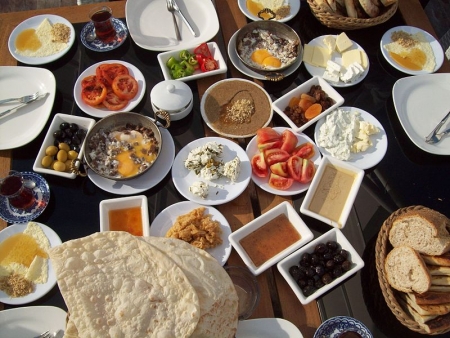
Turkish culinary customs weave a rich tapestry of traditions—from the ritual of sharing meze to the symbolism of simit at breakfast—revealing how food binds communities across Anatolia’s diverse regions!

Turkish dairy craftsmanship turns milk into edible heirlooms—kashkaval rings aging in brine, kefir’s effervescent tang, and the caramelized süzme yoğurt spread thick on warm bread, each preserving ancestral techniques in every bite!

Discover the comforting and diverse flavors of Turkish soups, from hearty lentil çorbası to the iconic tripe soup işkembe!

Turkish bread: A fragrant tapestry of flavors, from the street-corner simit to the hearth-baked pide, each morsel telling a delicious tale of Turkey's rich culinary heritage. Read Now!
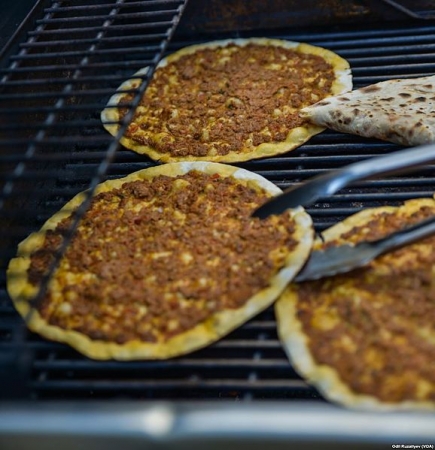
Explore the flaky, savory, and sweet world of Turkish pastries, from börek and pide to simit and gözleme!
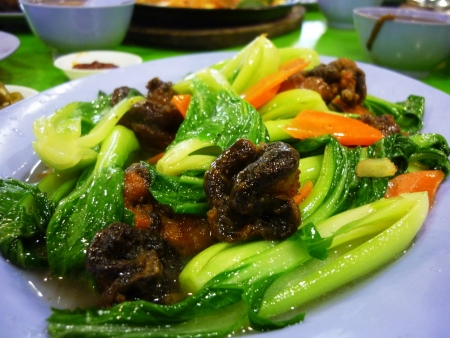
Discover the rich variety of Turkish vegetarian cuisine, featuring flavorful dishes like imam bayıldı, mercimek köftesi, and zeytinyağlılar!
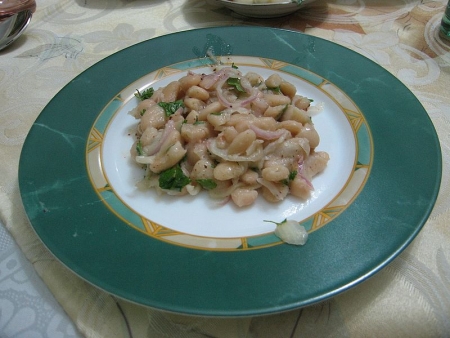
Explore the fresh and vibrant world of Turkish salads, from classic shepherd's salad to tangy ezme and refreshing çoban salatası!

Delve into the art of Turkish dolma and sarma, flavorful stuffed dishes featuring vegetables, vine leaves, and aromatic spices!
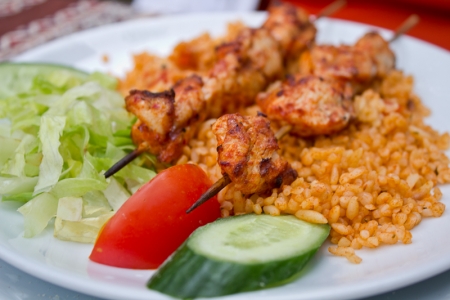
Savor the rich flavors of Turkish meat dishes, from succulent kebabs and köfte to slow-cooked stews like tandır and güveç!

Discover Turkey's delicious seafood traditions, from grilled fish sandwiches in Istanbul to regional specialties like hamsi and levrek!
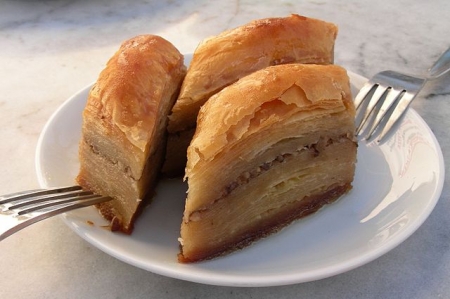
Indulge in Turkey's most beloved desserts, including baklava, lokum, and sutlac, and learn about their history and cultural significance!

Turkish beverages embody a living heritage—where the ceremonial foam of Türk kahvesi carries centuries of gossip and prophecy, mountain springs become ayran in nomadic yayık churns, and the tart koruk suyu (unripe grape juice) of Ephesus still quenches thirst as it did for ancient vineyard workers!

